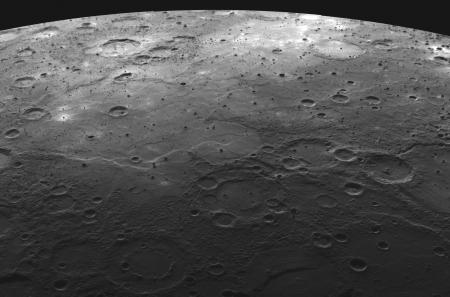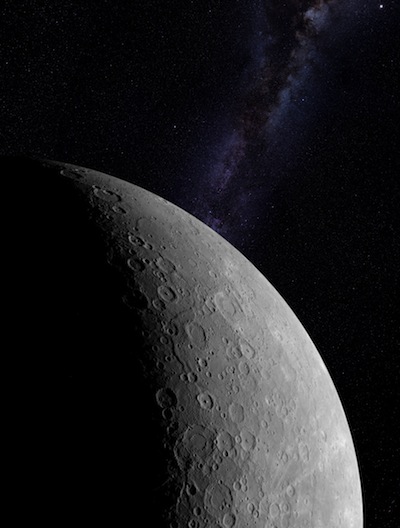
The surface of Mercury, taken on Aug. 19, 2009. (Credit: NASA and the Defense Video & Imagery Distribution System)
Since its formation over 4 billion years ago, Mercury has been slowly shrinking as the molten iron in its core solidifies. The process leaves wrinkles and ridges, known as scarps, across the planet’s surface. Using images from NASA’s recent MESSENGER probe, scientists have determined that the scarps would have reduced the radius of Mercury by about seven kilometers over its lifetime. This estimate is higher than that obtained using data in the 1970s from the Mariner 10 probe.
Original research article published in the journal Nature Geoscience on March 16, 2014.
Names and affiliations of selected authors

